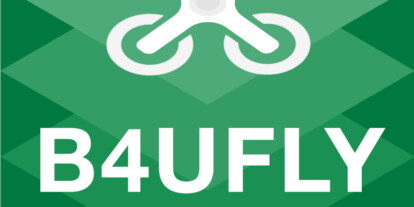If you are a public organization, there is a lot to think about when starting or growing a drone program. Once you have decided that you want to operate a drone as part of your non-recreational operations, the biggest question is how you want to go about operating legally.
One way is to operate under Part 107, the general rules for commercial operation of sUAS. The other is to operate under a Certificate of Authorization or Waiver (commonly known as a COA), which is specifically granted to public operators. A public organization is able to operate under either one, but each one comes with its own advantages and drawbacks.
What sort of organizations can utilize COAs?
The first question you should be asking is whether your organization is allowed to utilize a COA. Public operators are defined very broadly by the FAA. Among the types of public operators that have been granted COAs: Branches of the US military, colleges and universities, federal and state agencies, and a variety of state, local, and federal public safety agencies (e.g. police, sheriff, fire, transportation, etc.)
Generally, the COA provides for more operational freedom but increased compliance requirements, driving some public operators toward the Part 107 certification for ease of use. However, Part 107 does have some operational limitations that are avoided by operating under a COA. Since public organizations can choose to operate under either one as long as they are qualified and approved to do so (but not both at the same time), it is worth taking stock of your proposed operations and evaluating which method makes the most sense for your organization.
What is Part 107?
Part 107 is shorthand for 14 CFR Part 107, which is one section of the federal regulations governing the FAA, specifically its Air Traffic and General Operating Rules. Part 107 lists all of the rules and requirements for commercial operation of small uncrewed aircraft systems (sUAS), better known as drones.
Anyone operating under Part 107 on behalf of public organizations must take the FAA Aeronautical Knowledge Exam pertaining to uncrewed aircraft. This is also known as the Part 107 knowledge test or the UAG exam. For more information on the Part 107 exam, including renewing your Part 107, see our previous post all about the Part 107 exam.
What is a COA?
A COA is granted to a public operator for a specific drone-related activity. A public organization must apply for a COA via a portal on the FAA’s website. Processing this application is not an overnight process, so it is advisable to apply for a COA well before you may need to operate under it. Once your COA application is accepted, it opens up operational flexibility that you can’t get under Part 107.
Benefits and Limitations of Operating Under Part 107
We will go into more detail in future blog posts, but it is important to note the broad differences between Part 107 and a COA. Overly simplified, Part 107 is best for operations in daylight, in Class G, or simple operations. A COA is best for operating in ways that would require a Part 107 waiver.
Part 107 gives you more flexibility if operating under good, non-complex conditions (e.g. daytime, Class G, variety of mission types, etc.) This is because Part 107 does not have the stringent compliance and reporting requirements that a COA does. However, Part 107 operations under a waiver will generally require a much more detailed and extensive compliance and training burden. For example, flights at night or over people still require detailed operational descriptions, training, and compliance and reporting requirements that complicate the mission.
Benefits and Limitations of Operating Under a COA
COAs give you more operational flexibility because if operating under a COA, you are not operating under Part 107 and therefore not subject to the requirements of Part 107. This means that many operations that would require a waiver under Part 107 (e.g. operating in controlled airspace, operating at night) do not require a waiver under a COA.
However, operating under a COA requires planning, training, and compliance requirements that do not exist under normal Part 107 operations. For example, operating under a COA requires pre-mission planning, monthly reporting to the FAA, and more extensive documentation of planning and operations. Creating and implementing a training program is an important part of COA operations, as operating under a COA does not require taking the Part 107 exam.
How can Kittyhawk help?
Regardless of whether your operation chooses to operate under Part 107, a COA, or both, Kittyhawk is a powerful tool to keep everything compliant.
For public organizations operating under a COA, the compliance and reporting burden can slow things down if you don’t have a good way to keep track of your activities and prove compliance. Operating under a COA requires you to keep track of many operational activities, all aircraft in the fleet, policies and procedures for operation, training, maintenance, reporting, and other operating procedures. Importantly, this information needs to be sent to the FAA monthly under the terms of the COA.
Kittyhawk is a single source of record for managing these many components, as well as ultimately proving compliance for internal stakeholders and external parties like regulators. If you have additional questions about navigating COAs vs Part 107 or have ideas for future posts, get in touch: compliance@www.aloft.ai.
Andrew Elefant
Andrew Elefant is the Director of Legal & Policy at Aloft, an enterprise drone software company. Andrew is a licensed attorney in California. He is also an experienced Private Pilot with Instrument and Multi-Engine ratings, as well as a certificated Remote Pilot.



